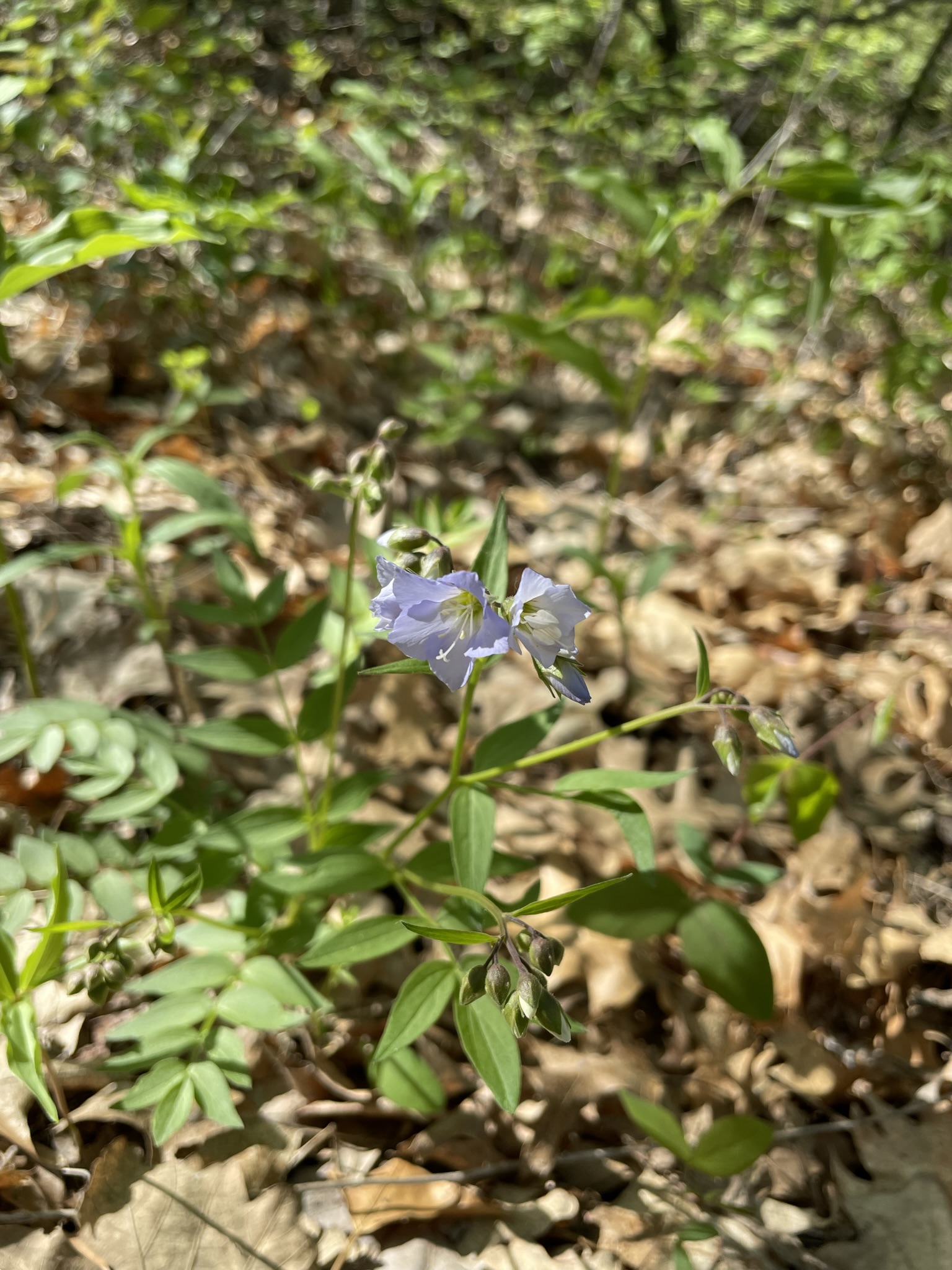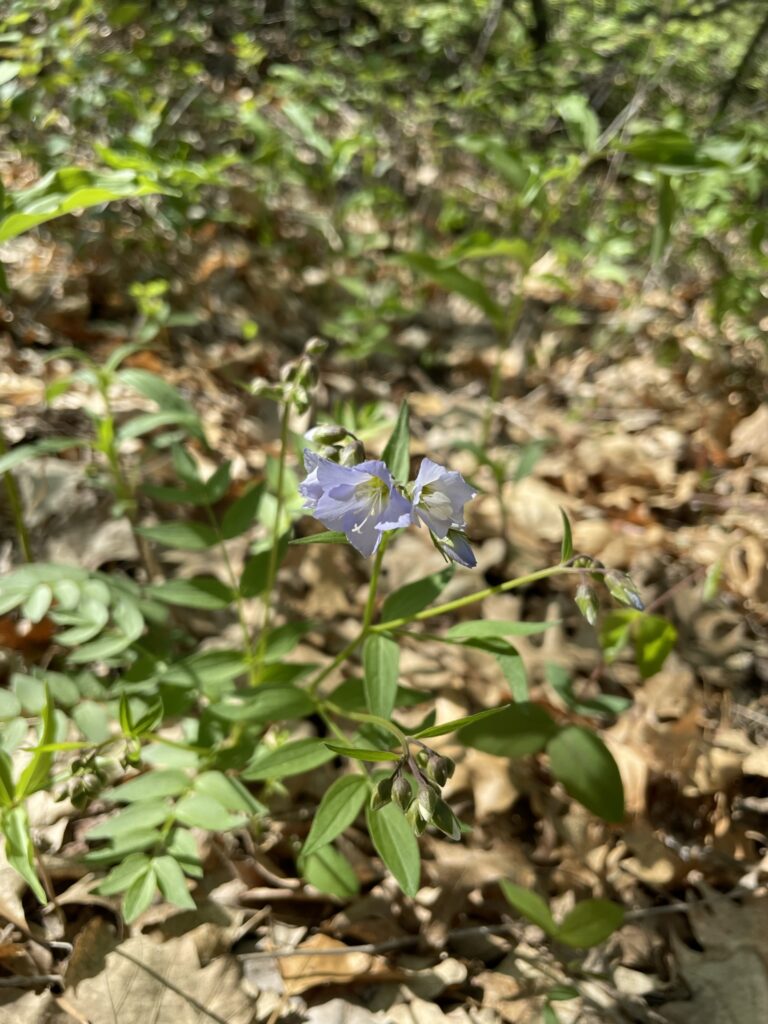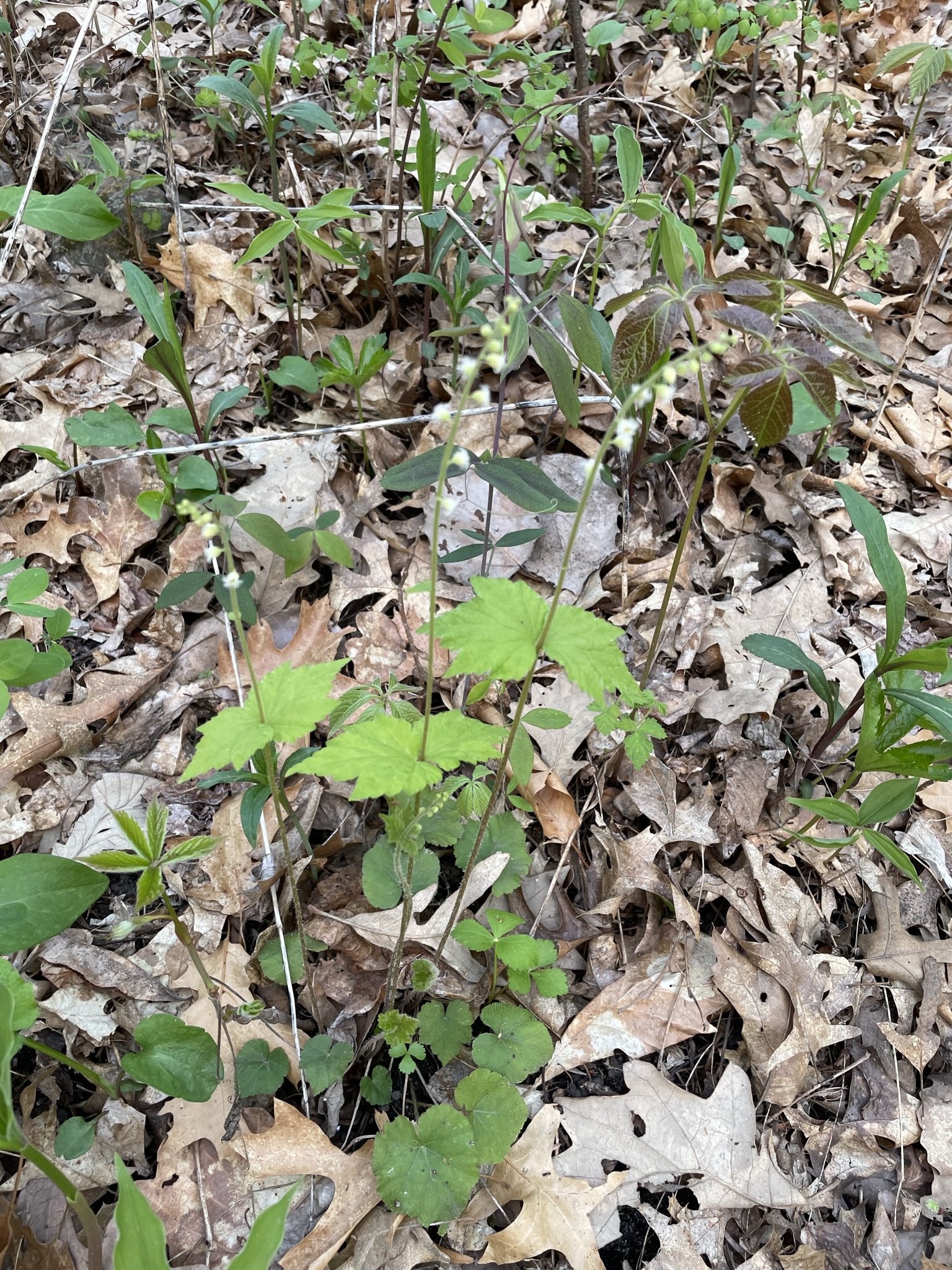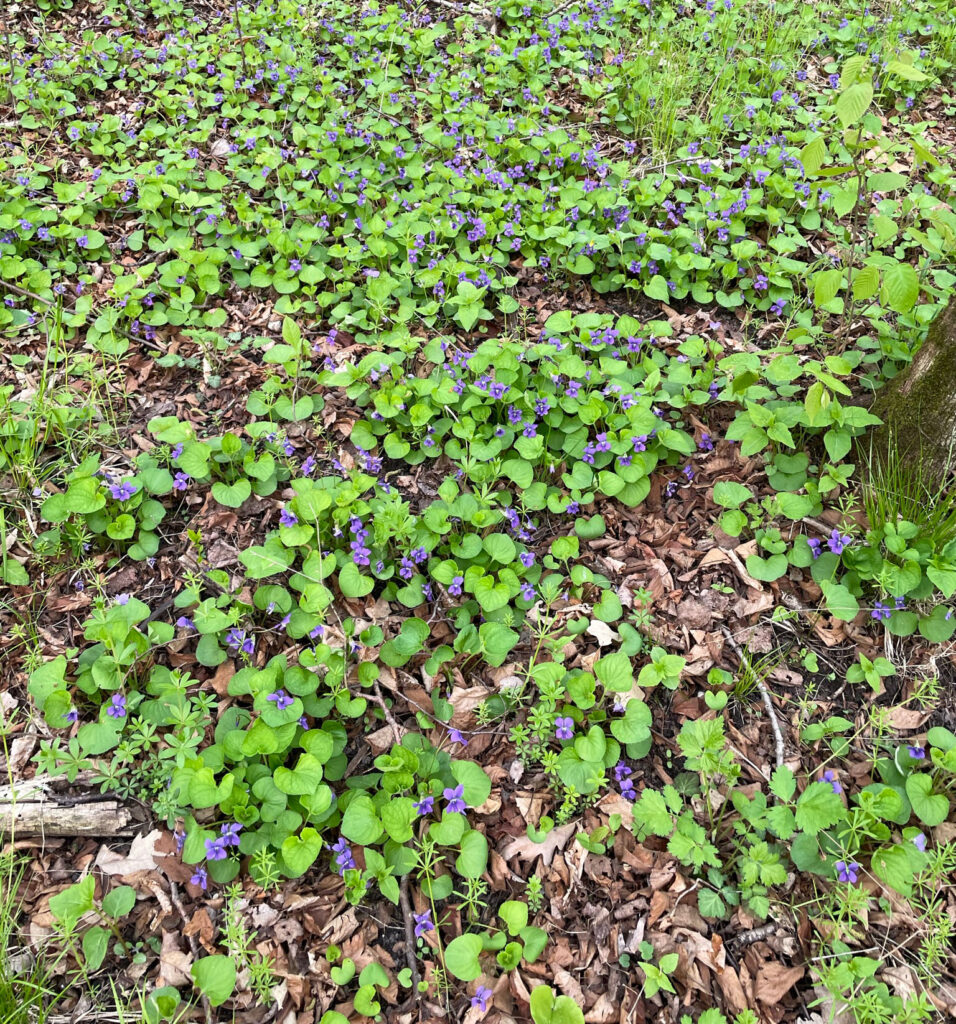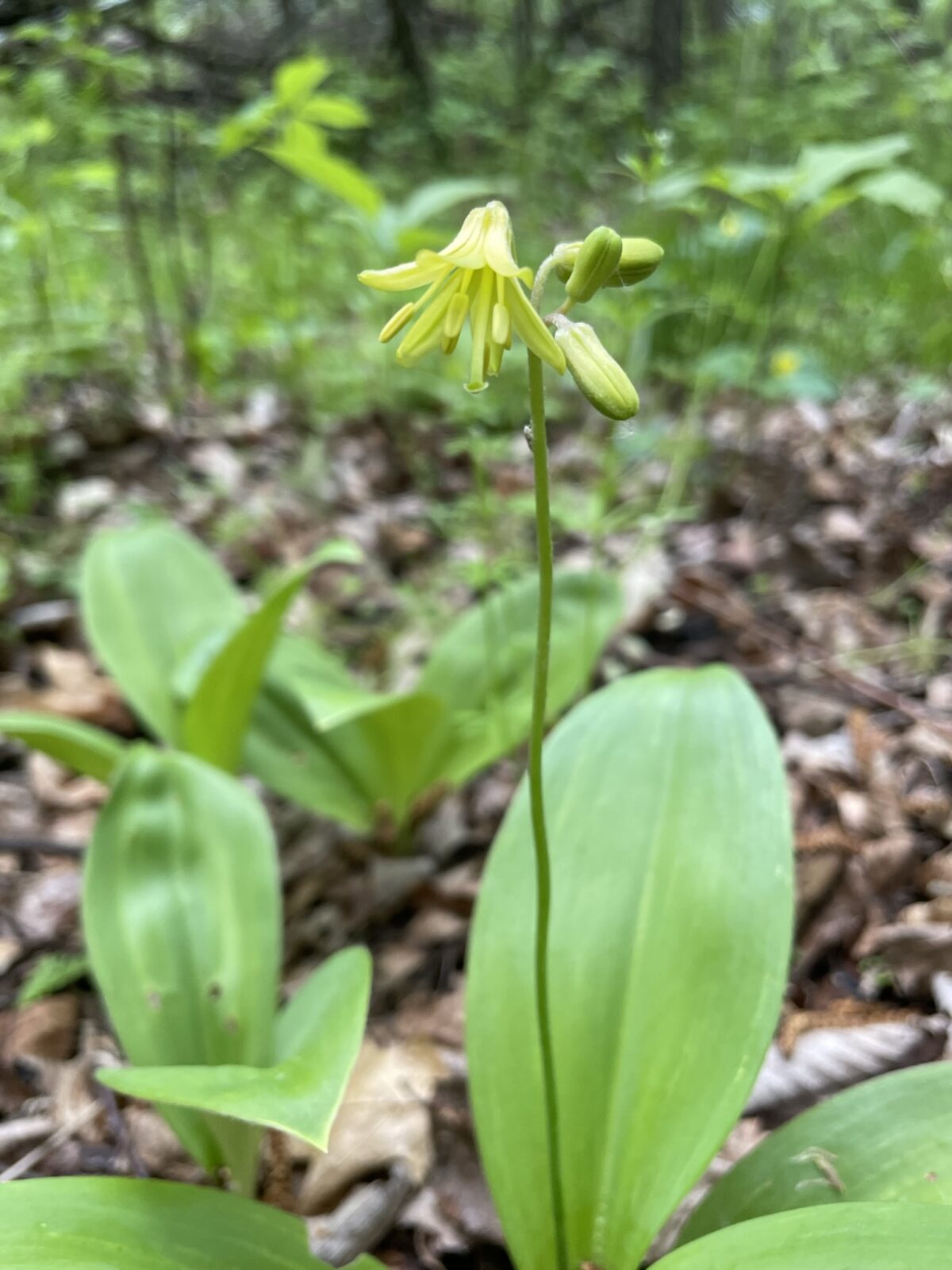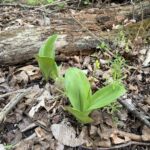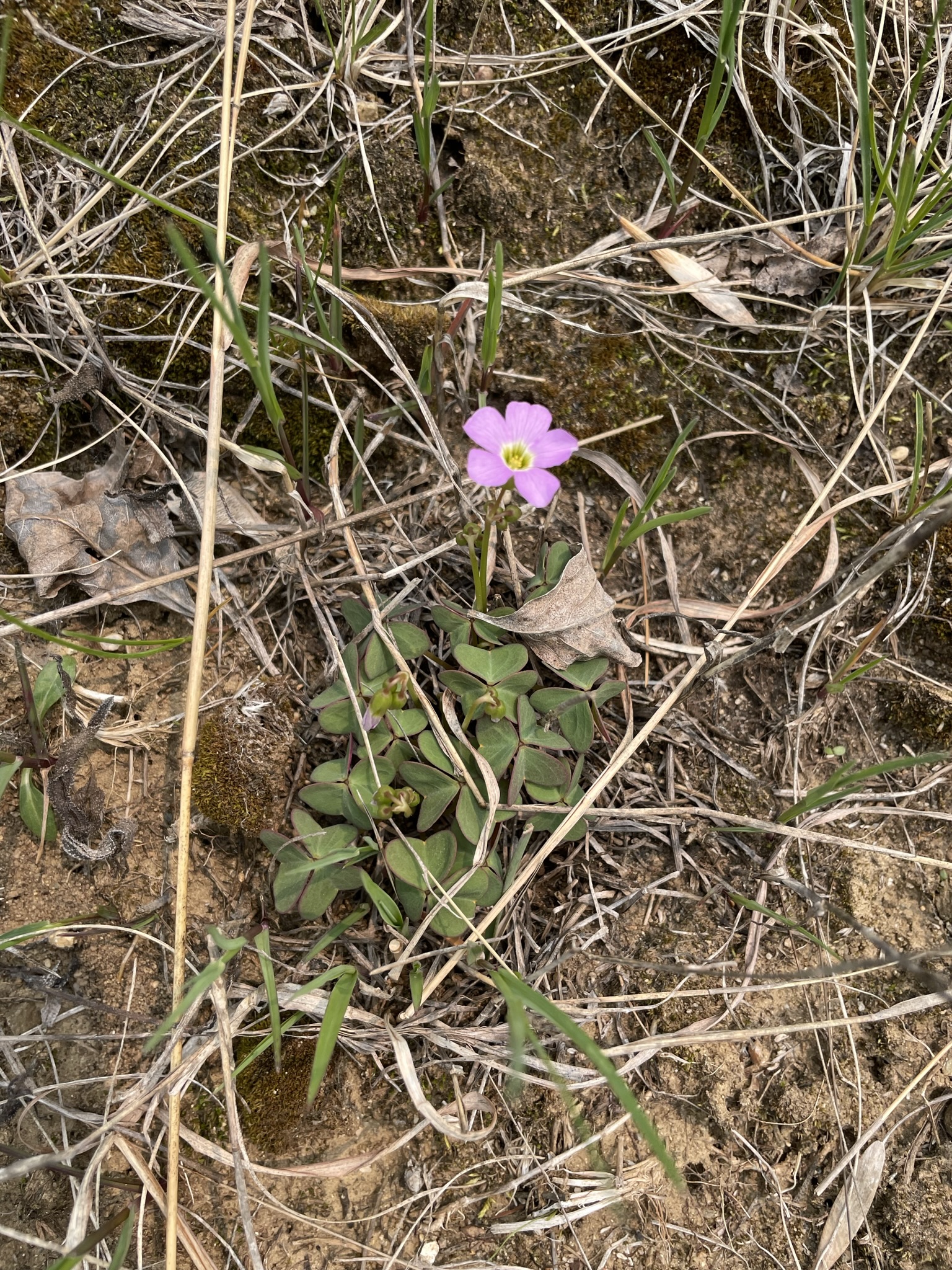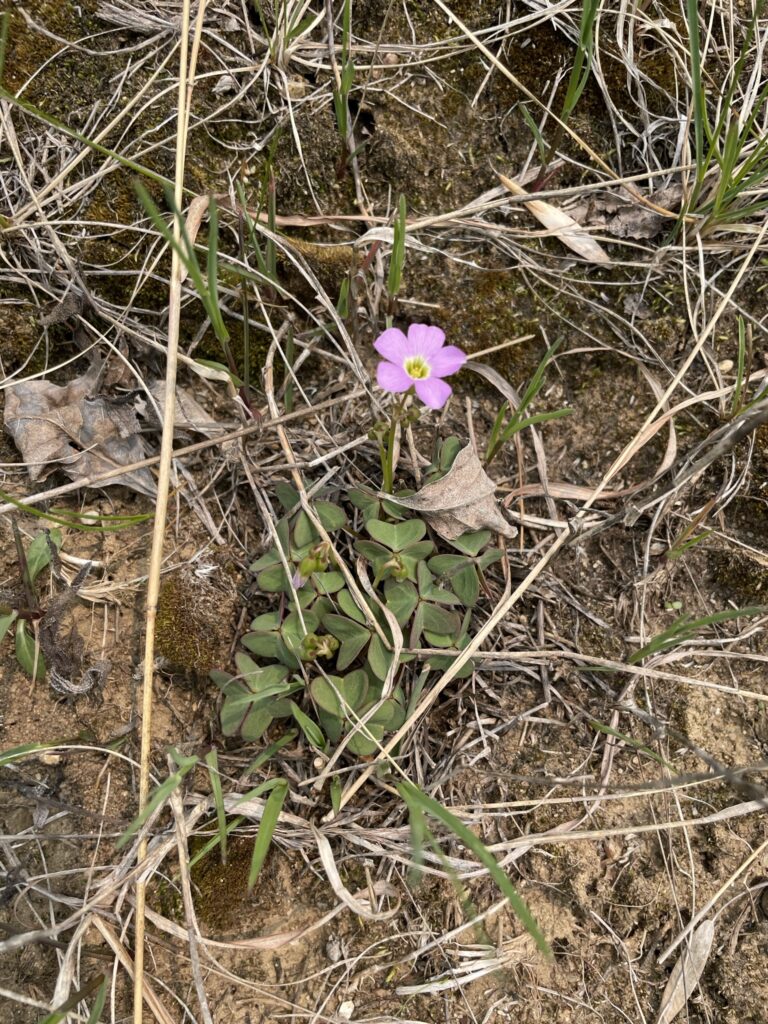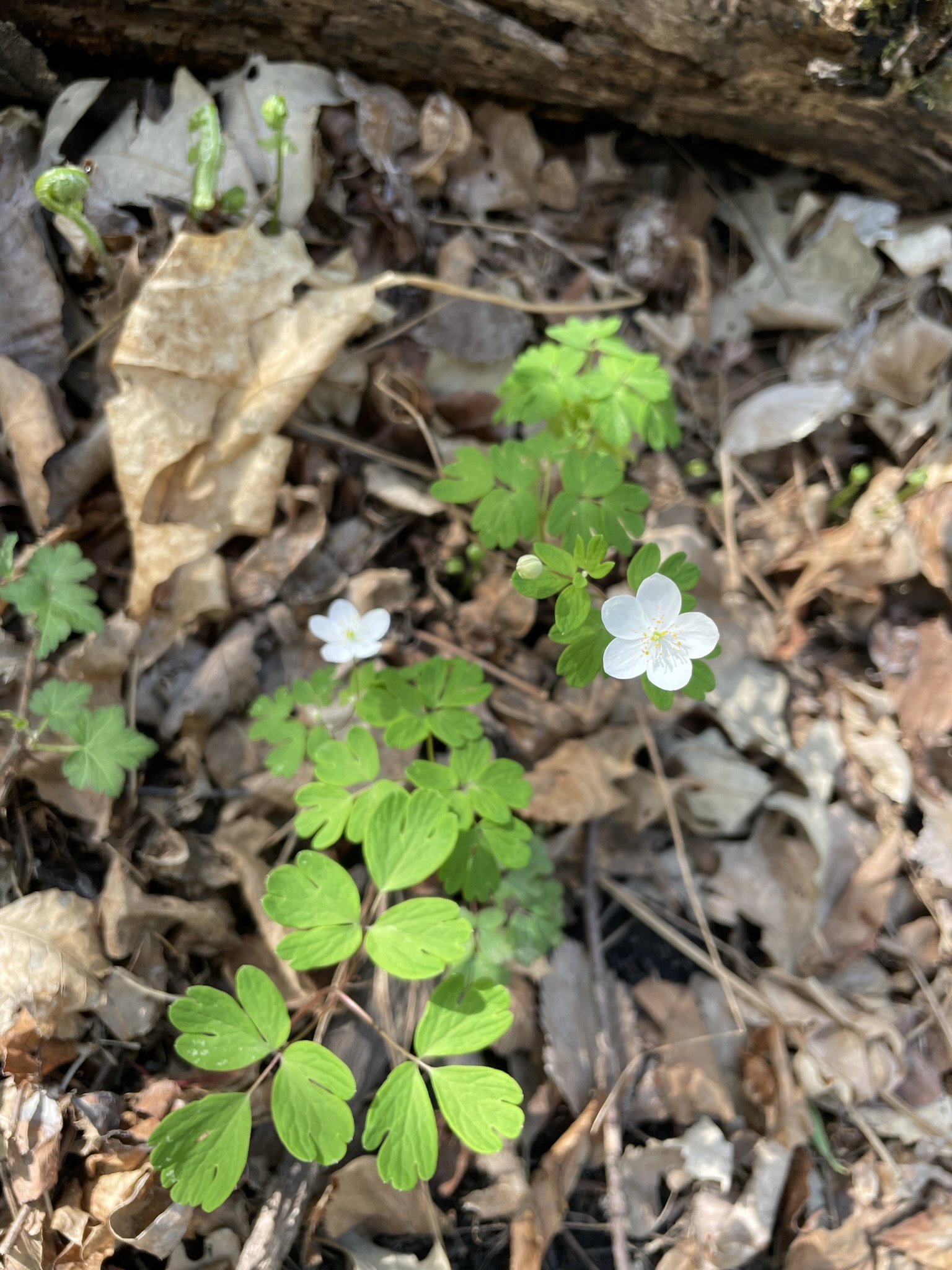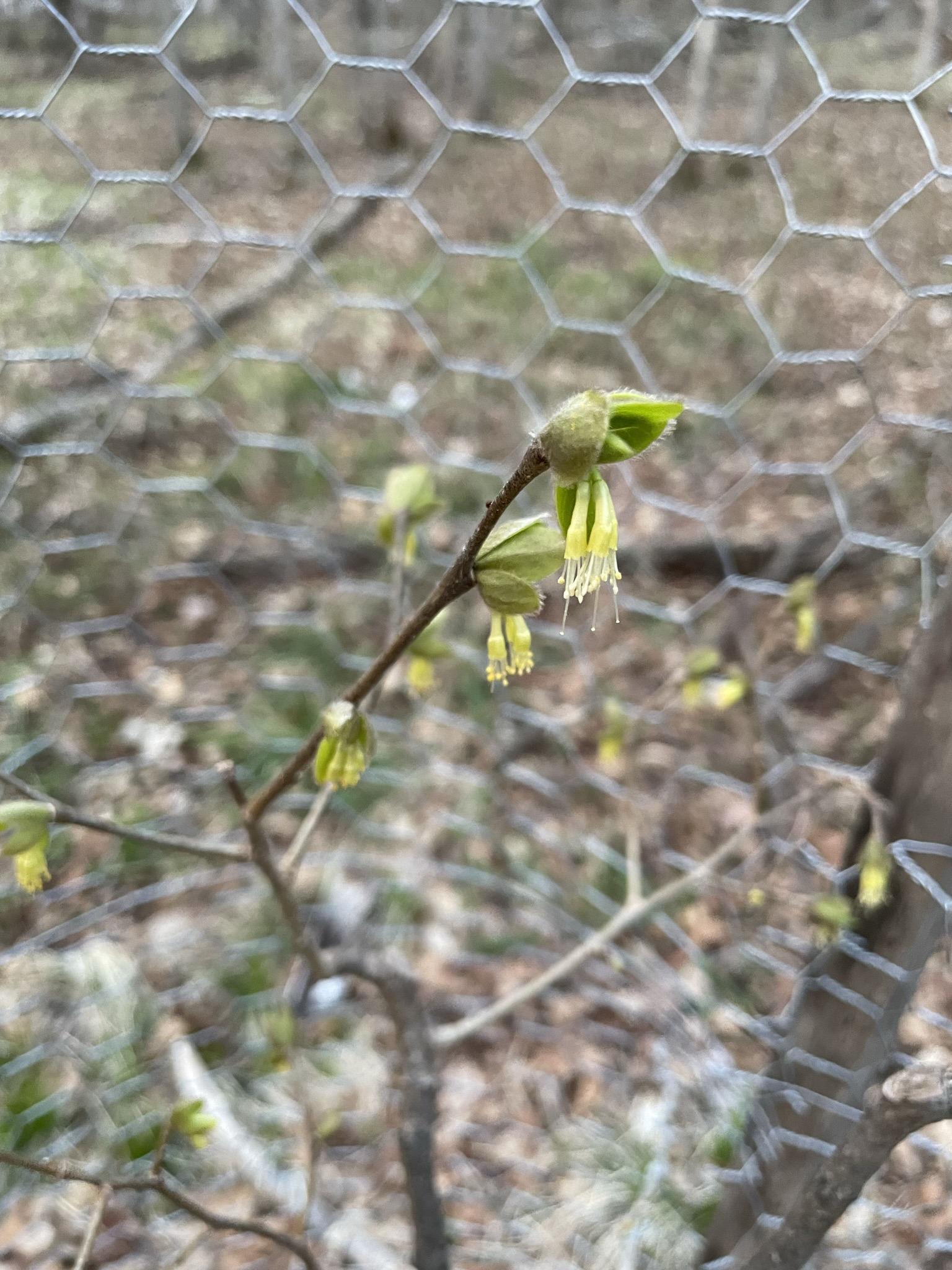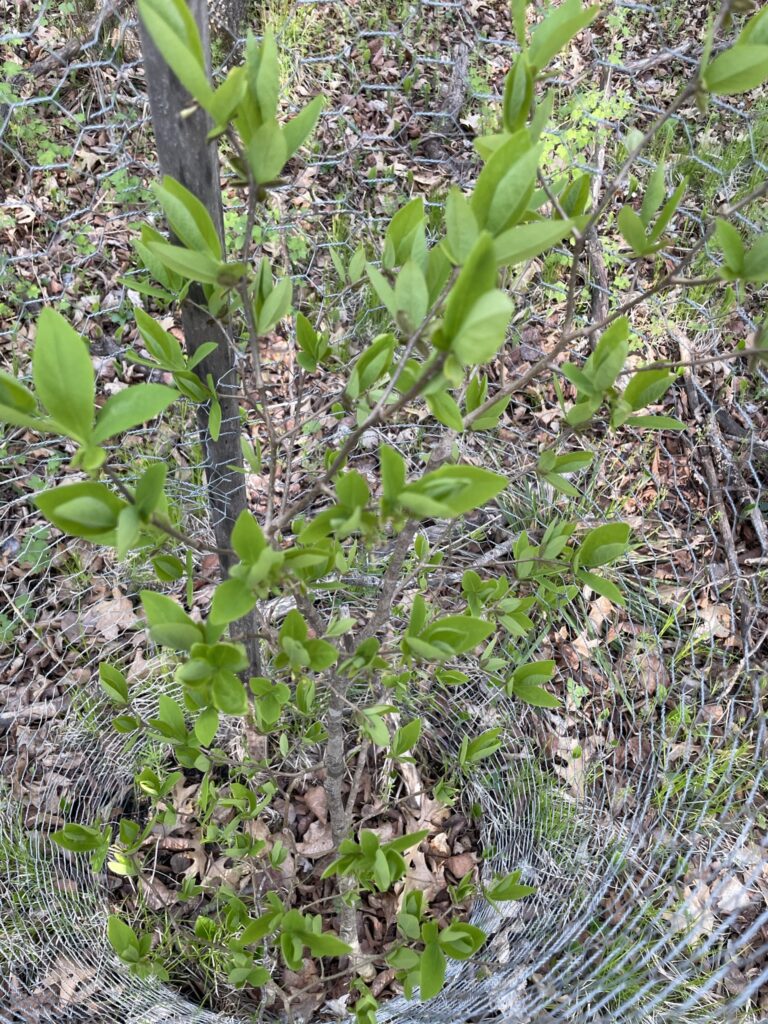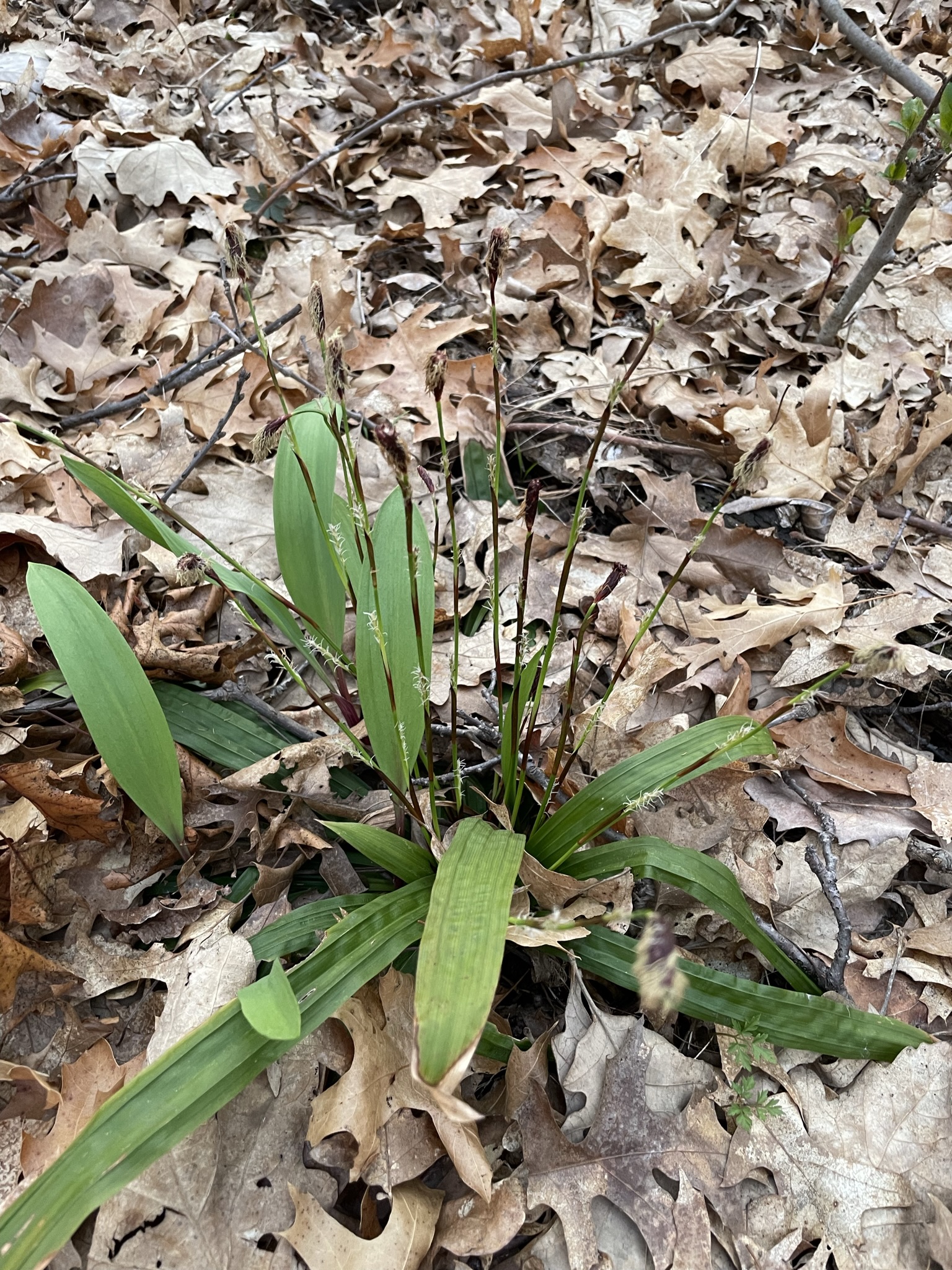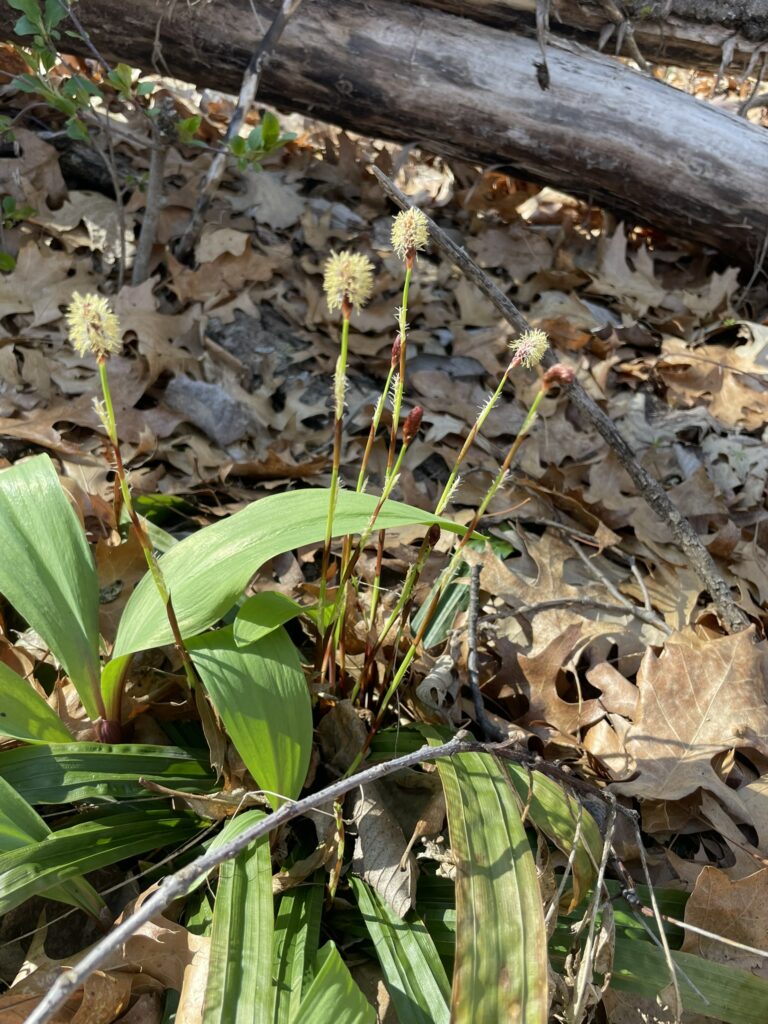Native To State: YES
Naturally Occurring: NO
Description
Appearance: Polemonium reptans is a herbaceous perennial known for its pinnately compound leaves and clusters of blue, bell-shaped flowers.
Leaves: The leaves are pinnately compound with multiple leaflets.
Flowers: The plant produces clusters of bell-shaped, blue flowers with white centers.
Habitat: It is commonly found in woodlands and along stream banks.
Distribution: Spreading Jacob’s ladder is native to North America.
Occurrence
Found in fern area and large brush island

